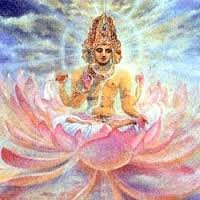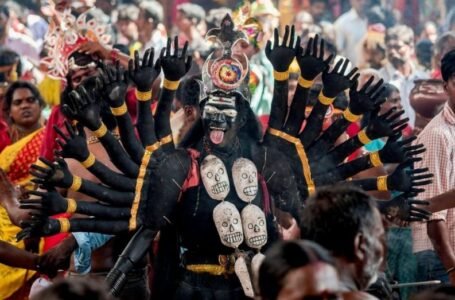Exploring the Brahma Purana: Ancient Wisdom, Creation Myths, and Spiritual Insights

The Brahma Purana is one of the eighteen Mahapuranas, which are ancient Hindu scriptures that contain stories, teachings, and guidance about the universe, gods, and human life. Named after Brahma, the Hindu god of creation, this text plays an important role in explaining Hindu philosophy, religion, and culture. It is filled with myths, legends, rituals, and advice on how to live a good and meaningful life. For many Hindus, it is a spiritual guide that connects them with their gods and traditions. In this blog, we will explore the Brahma Purana’s history, mythology, the three qualities or “gunas” it discusses, its connection to various Hindu deities, and much more.

History of the Brahma Purana
The Brahma Purana is believed to be written around the 4th century CE, but it was passed down orally long before that. Its exact age is not certain because these kinds of texts were passed from generation to generation before being written down. Over time, scholars and priests added different parts to the Purana to reflect new ideas and beliefs that emerged in different regions of India.
Because it is a text that has evolved over time, different versions of the Brahma Purana exist today. Still, the central themes remain the same. It talks about creation, different gods, and important holy places and rituals. The Purana’s flexibility over time has helped it stay relevant for Hindus, even as society and beliefs have changed.

Mythology in the Brahma Purana
The Brahma Purana is full of rich stories and myths about the creation of the universe and the gods who maintain it. As the name suggests, Brahma is at the center of this text. Brahma is the god of creation and is part of the Hindu trinity, which also includes Vishnu (the preserver) and Shiva (the destroyer).
One of the most important myths in the Brahma Purana is about the cyclical nature of the universe. According to the Purana, Brahma creates the world, which lasts for a certain period of time. Then Shiva destroys the world so that Brahma can create it again. This cycle continues endlessly, showing that creation and destruction are natural and necessary processes in the universe.
The Purana also contains stories about other gods and goddesses, like Vishnu, who is often worshipped as the protector of the universe, and Shiva, who is seen as both a creator and destroyer. These stories give insight into how Hindus view the universe and the divine forces that govern it.

The Three Gunas in the Brahma Purana
In Hindu philosophy, everything in the universe is influenced by three qualities, known as gunas. The Brahma Purana talks about these gunas and how they affect both the physical world and human behavior.
- Sattva (Goodness): This quality is associated with purity, harmony, and knowledge. People with a lot of sattva in their nature are calm, peaceful, and wise.
- Rajas (Passion): This quality is linked to activity, desire, and restlessness. When a person is driven by rajas, they are often focused on achieving their goals, sometimes to the point of being overly ambitious or anxious.
- Tamas (Ignorance): Tamas is connected with darkness, laziness, and confusion. It makes people feel lethargic or unmotivated, often leading to ignorance or a lack of understanding.
According to the Brahma Purana, everyone has all three gunas, but one is usually stronger than the others. By practicing good actions and devotion, people can increase sattva in their lives, which leads to spiritual growth.

Deities in the Brahma Purana
Although Brahma is the central figure in the Brahma Purana, the text also honors many other gods and goddesses in Hinduism. Vishnu and Shiva, the other two gods in the Hindu trinity, play significant roles, along with goddesses like Saraswati, Lakshmi, and Durga.
- Brahma: As the creator, Brahma is responsible for making the universe and all living things. However, he is not worshipped as much as other gods in Hinduism.
- Vishnu: Vishnu is seen as the protector of the universe. He appears on Earth in many forms, called avatars, to save the world from danger. The most famous avatars of Vishnu are Rama and Krishna.
- Shiva: Shiva represents both creation and destruction. His role is to destroy the universe so that Brahma can recreate it. Shiva is also known for his intense meditation and is worshipped as the god of transformation and change.
- Saraswati: The goddess of knowledge and learning, Saraswati is closely linked with education, music, and the arts. She is often depicted holding a book and a veena (a musical instrument).
- Lakshmi: Lakshmi is the goddess of wealth and prosperity. She brings good fortune to her devotees and is usually worshipped during Diwali, the festival of lights.
- Durga: Durga is a powerful goddess who represents strength and protection. She is worshipped for her ability to destroy evil forces and bring balance to the universe.

Writers and Composition
The Brahma Purana, like many other Puranas, was traditionally attributed to the sage Vyasa. However, it is difficult to know exactly who wrote it because the text was passed down orally for centuries. Different scholars and priests contributed to its content over time, adding stories and teachings that reflected the beliefs of their communities.
The Brahma Purana is divided into several sections, each focusing on different topics, such as creation, holy places, rituals, and stories of gods and goddesses. The Purana’s flexible structure has allowed it to grow and evolve over time, making it a living text that has continued to inspire devotion and learning.
Verses and Structure
The Brahma Purana consists of approximately 10,000 verses, which are divided into two main parts: the Purvabhaga and the Uttarabhaga.
- The Purvabhaga section primarily deals with cosmology, describing the creation of the universe and the stories of various gods and sages.
- The Uttarabhaga section focuses on religious practices, rituals, and descriptions of sacred places.
The verses of the Brahma Purana are written in a poetic style and are usually presented as conversations between gods, sages, and devotees. This style makes the text easier to understand, as it often feels like the reader is listening to a wise teacher explaining important spiritual concepts.

Worship and Rituals
The Brahma Purana is not just a book of stories; it is also a practical guide for worship and rituals. It describes many ceremonies, such as yajnas (sacrificial rituals) and pujas (acts of worship), that are important in Hindu religious practice.
For example, the Purana talks about the significance of going on pilgrimages to holy places like Puri, the home of Lord Jagannath, and Prayag, where the Ganges, Yamuna, and Saraswati rivers meet. By visiting these sacred sites and performing rituals, Hindus believe they can gain spiritual merit and move closer to achieving moksha (liberation from the cycle of rebirth).

Legacy of the Brahma Purana
The Brahma Purana has had a lasting impact on Hindu religious thought and culture. It has influenced various schools of philosophy, including Vedanta and Bhakti traditions, which emphasize devotion to God as the path to spiritual liberation.
Many of the stories in the Purana have been retold in literature, art, and theater, making them a part of everyday life for Hindus. Festivals like Diwali, Durga Puja, and Janmashtami often include references to the stories and rituals described in the Brahma Purana.
Scientific Learnings in the Brahma Purana
Though the Brahma Purana is primarily a religious text, it also touches on some ideas that can be linked to modern science. For instance, the Purana’s concept of cyclical time, where the universe is created, destroyed, and then recreated, is similar to certain scientific theories about the universe’s expansion and contraction over time.The Purana also emphasizes the interconnectedness of all living beings, a concept that aligns with modern ecological thought, which recognizes the importance of balance and harmony in nature.

Conclusion
The Brahma Purana is a treasure trove of Hindu mythology, philosophy, and religious practice. Its stories, teachings, and rituals continue to inspire millions of Hindus across the world, offering guidance on how to live a meaningful life and connect with the divine.
Whether through its tales of gods and goddesses, its exploration of the three gunas, or its instructions on worship and ritual, the Brahma Purana remains a vital part of Hindu tradition and spiritual practice. Its legacy endures, offering timeless wisdom for future generations.


